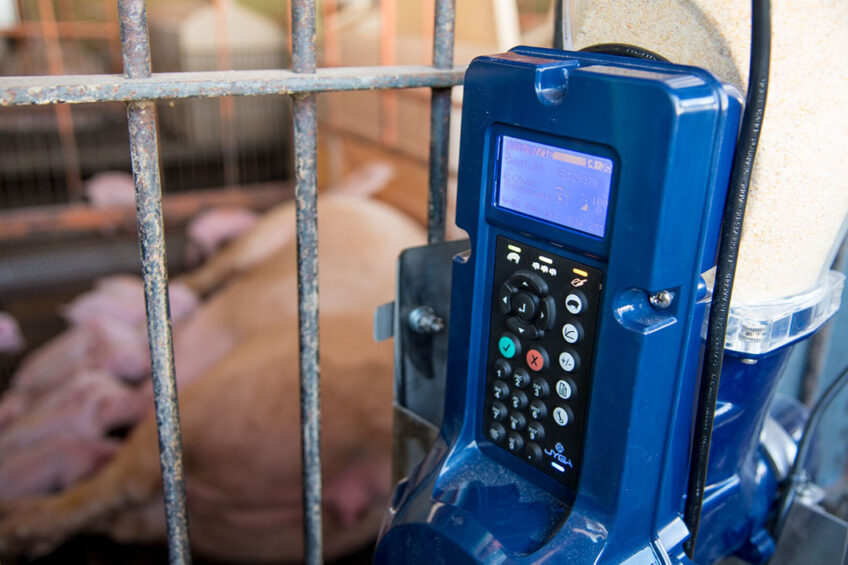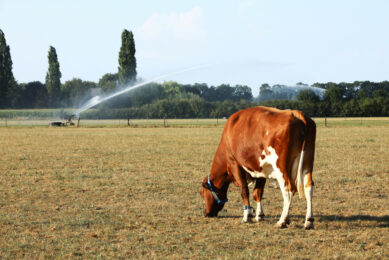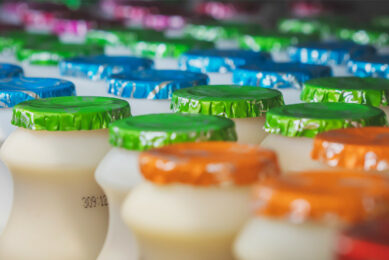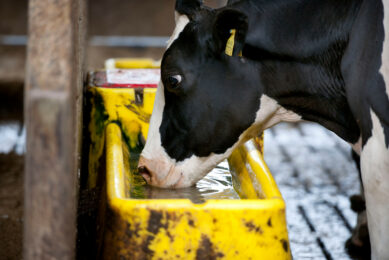Heat Stress: How it impacts feeding behaviour in lactating sows

Heat stress can reduce a sows feed intake, which can result in reduced milk production and therefore have a negative knock-on effect on piglet growth. How can the climate affect the lactating sows feeding behaviour?
During the past decades, the production of pigs in tropical regions, such as Latin America and Asia, increased intensively. In these regions, production and performance generally remain below those obtained in temperate countries, such as Europe. Climate is the first most limiting factor for reaching maximum production efficiency in hot climate regions.

While heat stress is an occasional challenge in temperate regions via so-called “heat waves”, in the tropical and subtropical areas it is a constant challenge. In addition, in these regions the effects of high temperatures can be intensified by the relative humidity (RH) of the air. Under heat stress, sows reduce their appetite in order to reduce their heat production due to the thermal effect of feed digestion. This reduction in voluntary feed intake has negative consequences on body reserves, mobilisation, milk production, and future reproductive and productive longevity of the sow. When we consider modern genotypes, climatic effects are more intensified due to high growth rates, deposition of muscle tissue and reproductive potential.
Understanding feeding behaviour
Heat stress can also cause changes on the kinetics of voluntary intake, feeding pattern and nursing ability of sows, reducing total daily intake of sows, reducing breast-feeding time and inducing higher agitation.
Under naturally fluctuating temperatures, 2 peaks of feeding activity occur during 24 h. One peak is observed early in the morning and the other is observed before the beginning of the night. According to Silva et al. (2009a), these observations suggest that the feeding pattern activity of lactating sows is mainly driven by light and temperature intensity changes in the farrowing room. Still in agreement, Gourdine et al. (2006), showed that more than 50% of the total daily feed intake occurred during the nocturnal period during the hot season (64%), as for Silva et al. (2009a) around 44% of daily feed intake occurred during the nocturnal period and that this value was greater in the hot season than in the warm season (47%).
Every degree higher results in reduction in feed intake
Based on data from the previous studies, each degree increase in temperature corresponded to a reduction in daily feed intake of 462 g/d. These results suggest that the negative effect of elevated ambient temperature may be accentuated by the increased RH in a tropical climate. More recently (Silva et al. 2021; Submitted) studied the impacts of climate on modern sows’ voluntary intake and feeding patterns. The study indicated that the daily ingestion time was lower in the hot than in the cool season (36.8 vs. 72.3 min/ d, respectively) and the ingestion time per meal was also lower in the hot compared to the cool season (5.7 vs. 7.5 min/ meal, respectively). The hot season also showed a lower rate of daily intake when compared to the cool season (36.8 vs. 72.3 g/ min, respectively). The ratio between voluntary feed intake and the required daily feed intake based on the sow’s daily nutrient needs was also lower for the sows during the hot season (66 vs. 90% for hot and cool season). In addition, we also observed that irrespective of season, sows showed a higher diurnal feed intake (3.430 vs. 2.750 g/ d). On a daily comparison of feed intakes or variations from day to day, sows during cool season showed a higher voluntary feed intake from d 9 to d 24 compared to the hot season (Figure 1).
Figure 1 – Daily feed intake during cool and hot season. Feed intake differed between seasons from d 9 to 18 and from d 20 to 24.

The nycthemeral voluntary feed intake pattern peaked twice daily (within 24 h) irrespective of the season. The 2 peaks were observed between 0100 and 0900 h and between 1600 and 1800 h (Figure 2). Each point is an input (least squares means) of 18 sows in the cool season and 32 sows in the hot season. The size of the peak differed and the hourly feed intakes were higher during the cool season compared with the hot season from 0100 until 0900 h, 1600 h, and 1700 h (Figure 2). As for the hot season the peak at 1800 h was higher than for the cool season. Regardless of the season, sows showed a higher proportion of feed intake between 0100 and 0900 h, which was equivalent to 83% of the total daily feed intake.
Figure 2 – Effect of season and time of day on the daily fluctuations of ambient temperature (dotted lines) and daily feed intake in lactating sows (solid lines).

Final considerations and implications
The findings confirm that climatic factors, specifically high temperatures and RH, limit the performance and voluntary feed intake of lactating sows. Moreover, the studies suggest that lactating sows tend to keep a similar feeding behaviour independent of the season, with a more pronounced intake between 0100 and 0900 h. Sows may not change feeding pattern according to season, but reduce significantly the total feed intake under hot climate conditions in order to reduce the thermal effect of feed. In addition, it seems that even when sows are kept under heat stress conditions, there is still a threshold within the thermal amplitude for increasing feed intake and improving feeding patterns, when during the cooler periods sows could compensate low diurnal feed intake if properly stimulated. The findings lead us to believe that the strategic use of feed management is a viable strategy to increase the sows’ voluntary feed intake and benefit milk production and as a consequence improve litter performance all of which can help attenuate the negative effects of heat stress conditions on the nursing sow.
References are available on request
Join 13,000+ subscribers
Subscribe to our newsletter to stay updated about all the need-to-know content in the dairy sector, two times a week.






